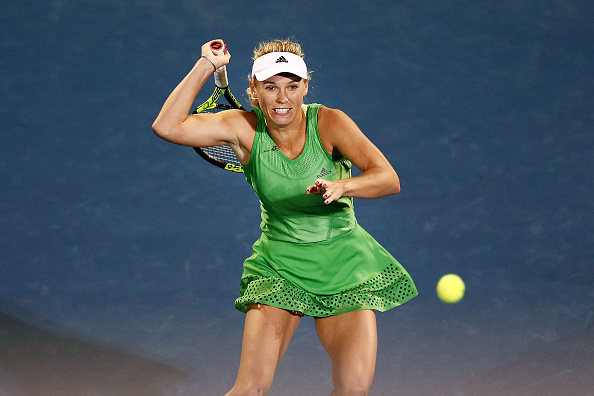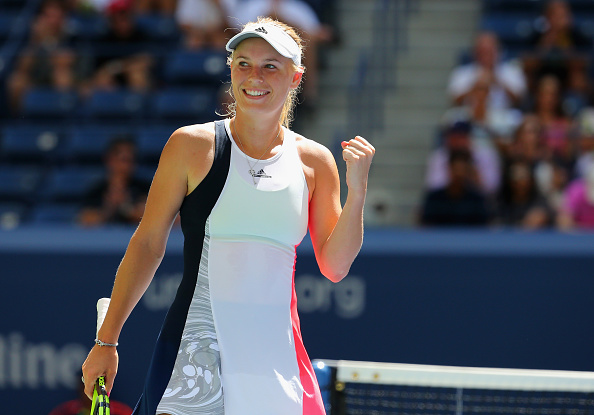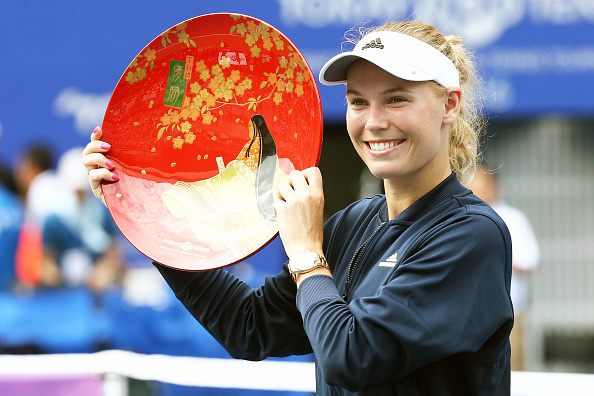After a disappointing first round loss last year, Caroline Wozniacki comes back to the Australian Open hoping to improve her past results in the first Grand Slam of the year. The Dane struggled to win matches most of the last season, but just this year she has reached two quarterfinals. Wozniacki will make her debut in Melbourne on Tuesday against Arina Rodionova.
Notable results to date
Wozniacki began her season at the Auckland Open where she was the third seed, after the early loss of Serena Williams and the withdrawal of Venus Williams, Wozniacki became the clear favorite. In the quarterfinals, she met Germany’s Julia Goerges. Wozniacki dominated the first set and led 3-0 in the second set when the German staged a monumental comeback to defeat the Dane in three sets.
At the Sydney Apia International, Wozniacki was the 10th seed and in the first round, she displayed solid tennis defeating the Olympic gold medalist, Monica Puig in three sets. A win over Yulia Putintseva put her in her second quarterfinal of the year where she would face Barbora Strycova. The match lasted over three hours in which Wozniacki came back to win the second set, but the Czech proved to be too strong and defeated her to reach the semifinals.

Best hard court results leading up to the Australian Open
In 2016, Wozniacki opened her season reaching the Auckland Open semifinal where she lost to Sloane Stephens. At the first major of the year, the Dane couldn’t make it through the first round after a three-set defeat against Yulia Putintseva. After a third round defeat in Doha, Wozniacki went on to reach the semifinals at Monterrey Open before losing to the eventual champion, Heather Watson.
At Indian Wells and Miami, the Dane scored early exits, not being able to win more than two matches. After missing the clay season due to an injury and a disappointing grass season where for the first time since the Australian Open in 2008 entered a tournament unseeded. Back on the US Open series, Wozniacki began at Washington where she was forced to retire in her second round match against Samantha Stosur due to sharp pain in her left arm.

At the Olympics, she won her first round match but faced a tough opponent in the second round, Petra Kvitova who scored straight sets win over the Dane. Prior the US Open, Wozniacki played the New Haven Open, her most successful tournament, but failed to win a match. After injuries and early round losses, Wozniacki stunned at the US Open, reaching the semifinals before losing to Angelique Kerber.
That US Open result gave her confidence during the Asian Swing, where she won her first tournament of the year at Tokyo defeating Naomi Osaka in straight sets. At Wuhan and Beijing, the Dane lost in the third round, both against Agnieszka Radwanska. At the Hong Kong Open, Wozniacki entered as a seeded player and went on to win the tournament defeating Kristina Mladenovic in three sets. Wozniacki ended her hard court season at Luxembourg where she lost in the quarterfinals.

Best Australian Open result
Wozniacki’s first Australian Open was in 2008 when she was just 18 years old, where she reached the fourth round. In 2011, Wozniacki was on top of the world and her first Grand Slam as the new world number one was the Australian Open. Up until her quarterfinal match, Wozniacki hadn’t yielded a set in the tournament. After defeating, Francesca Schiavone, the Dane secured her place in the semifinals. There, Wozniacki faced Li Na and she took the opening set and for most of the second set she had everything under control and even had match points, but the Chinese came back and turned the match around to reach the final.
The 2011 Australian Open is still Wozniacki’s best result in Melbourne. In 2012, she reached the quarterfinals and from then it seems like the Dane wins a match less year after year. In 2016, she wasn’t able to win her first round match.

How Wozniacki's game translates to the surface
Wozniacki is not an aggressive player, her game usually relies on her defensive skills and her ability to return almost every ball until her opponent makes a mistake. The Dane’s best results in a Grand Slam are also on a hard court at the US Open. This surface tends to be a lot faster than the one at the Australian Open which also has a livelier bounce. Because of the slower pace, Wozniacki would be able to reach more balls, however, because of this same reason it would be harder for her opponents to make mistakes. But what could be a decisive factor in Wozniacki’s game is not her lack of offensive game but her mental strength, especially considering that in the past years her results in Melbourne had gotten worse.










































